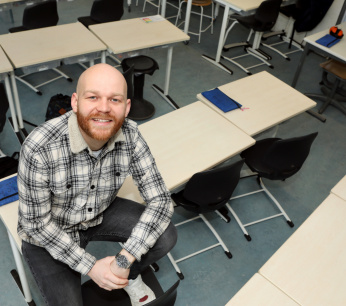Universities of applied sciences live on reserves
Universities of applied sciences spent 93 million euros more last year than they received in income. Of the 37 higher professional education institutions, 28 are in the red, according to an inventory by the Education Magazine.

Source: annual reports
After at least fifteen years of surpluses, it is the first time that higher professional education has shown an operating deficit as a sector. According to the annual reports of institutions, this is partly due to extra investment in education.
The deficit amounts to more than 2 percent of the 4,1 billion euros in income that the universities of applied sciences together booked. The buffers are more than sufficient almost everywhere to absorb the loss. The equity of the higher professional education institutions together still amounts to a solid 44 percent of the balance sheet total (compared to 46 percent in 2015). Most institutions had already foreseen that they would take advantage of their reserves. An operating deficit of 70 million euros had been budgeted.
| Annual result HBO 2016 | ||
| Year | HBO results in millions of euros | HBO result% of total income |
| 2016 | -92,9 | -2,3% |
| 2015 | +23,5 | + 0,6 % |
| 2014 | +158,6 | + 3,9 % |
| 2013 | +107,8 | + 2,8 % |
| 2012 | +60,8 | + 1,6 % |
Source: 2012-2015 DUO Data Book, 2016 annual reports
A quarter of the institutions recorded a loss of more than three percent. The largest operating deficits, in absolute terms, are for the account of The Hague University of Applied Sciences (-11,3 million, -5,6 percent) and Windesheim (-10,8 million, -5,8 percent). In relation to the income, the Christelijke Hogeschool Ede receives the largest minus: a loss of 9 percent (-3,2 million).
| Colleges with the lowest profitability | ||
| Institution | Result% income | Result in euros |
| Christian University of Applied Sciences Ede | -8,9% | -3.237.000 |
| Windesheim | -5,8% | -10.787.000 |
| The Hague University | -5,6% | -11.321.000 |
| Ipabo University | -5,3% | -513.300 |
| Utrecht School of the Arts | -5,3% | -2.773.264 |
Source: Annual reports 2016
Of the nine universities of applied sciences that show an operating surplus, there are two that stand head and shoulders above the rest: Zeeland University of Applied Sciences (+7%, 3,4 million) and Viaa University of Applied Sciences (+6,3%, 976.000). Click here for one overview per institution.
At eighteen institutions, the annual result turned out (slightly) better than the budget.
At eighteen institutions, the annual result turned out (slightly) better than the budget. Such as at Inholland and Saxion, which may suffer losses, but are both three million euros less than expected.
At the same time, there are almost as many institutions that are faced with a greater deficit. The Amsterdam University of Applied Sciences is minus 7 million euros where a zero was estimated. Avans expected a plus of 5,6 million euros, but was just five million short. This is the first time, because the Brabant institution has added large operating surpluses to its reserves for years.
Equity
Most colleges have enough fat on the bones. At two-thirds of the institutions, the total assets after the loss at the end of 2016 consist for at least 35 percent of equity. Three institutions have this so-called solvency above 70 percent: the Amsterdam University of the Arts, the Catholic Pabo in Zwolle and Avans.
At the bottom are the Hotel School The Hague, HAS Den Bosch and Hogeschool van Amsterdam. The AUAS still has more than two hundred million euros in loans on its books for real estate projects.
Loan system
For the time being, the introduction of the student loan system mainly entails many uncertainties, according to the universities of applied sciences in their annual reports. For example, the reduced intake led the Ministry of Education to adjust the government grant downwards in 2016. It is one of the explanations for the disappointing income.
In addition, there are the higher expenditures, which universities of applied sciences mainly attribute to extra investments. In 2018, higher education institutions will receive funding for the first time as a result of the abolition of the basic grant. In previous years, they agreed with Minister of Education Bussemaker to invest extra in education themselves.
'In accordance with the agreements made with the Ministry of Education, Culture and Science to make pre-investments charged to the reserves, HAN closed 2016 with a loss of € 8,5 million on a turnover of € 305 million', reports the Hogeschool van Arnhem en Nijmegen . And Hanze University of Applied Sciences in Groningen: 'In the years 2016 to 2018, we will continue to capitalize on the available equity capital.'
Uncertainty
Will the institutions really receive the extra resources that the current government has promised from next year? Stories recently came out that the next cabinet would like to partially reduce the basic grant. If the government fails to comply with its agreements, this will have far-reaching consequences for educational institutions, warns Amsterdam University of Applied Sciences, among others:
'The hiring of additional lecturers and lecturers now will also have financial consequences after 2017. It is therefore important for the financial continuity of the AUAS that in 2018 the proceeds from the student loan system will flow back to higher education in order to be able to continue the structural expenditure now initiated. '


